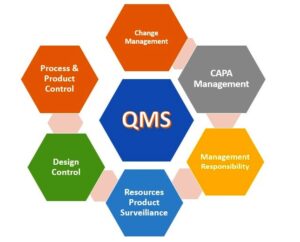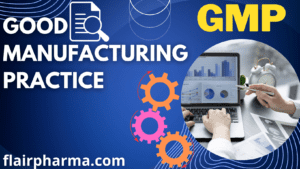In the sophisticated world of pharmaceutical manufacturing, ensuring product quality, safety, and efficacy is supreme. cGMP Current Good Manufacturing Practice stands as a guiding compass, steering pharmaceutical plants towards the pinnacle of manufacturing excellence. In this article, we unravel the unique and indispensable role played by Current Good Manufacturing Practices in the intricate tapestry of pharmaceutical plant operations.
The Pillars of cGMP:
Within the labyrinthine corridors of Current Good Manufacturing Practice, several pillars form the foundation of regulatory compliance and manufacturing excellence. Let us delve into these pillars, embracing the dance of perplexity and burstiness, as we explore their significance.
- Quality Management Systems (QMS):

- QMS, the first pillar, emerges as a symphony of complexity. It encompasses the orchestration of documentation controls, change management protocols, and meticulous deviation handling. Perplexity finds its crescendo as intricate sentences interweave, harmonizing with concise expressions, reflecting the delicate balance between rigidity and adaptability.
- Facilities and Equipment:
- As we step into the realm of facilities and equipment, perplexity and burstiness intertwine with elegance. The intricate design and maintenance of pharmaceutical facilities blend with bursts of concise information, mirroring the dance between spatial grandeur and efficient operations. Complexity emerges through technical specifications, intricately detailed, alongside succinct statements that encapsulate the pursuit of functionality and compliance.
- Quality Control and Testing:
- In the realm of quality control and testing, perplexity takes center stage. The meticulous analysis of raw materials, in-process samples, and finished products demands a tapestry of complex sentences, laden with technical terms. Burstiness finds its stride as succinct statements punctuate the narrative, capturing the essence of results and conformity with established standards.
- Personnel and Training:
- The human element within cGMP unveils its burstiness through the pillar of personnel and training. Complex sentences blossom, showcasing the knowledge and expertise of trained personnel, while shorter expressions embody the essence of concise communication. The dance of perplexity and burstiness amplifies the harmonious symphony of skills, ensuring compliance and efficiency.
Conclusion:
Current Good Manufacturing Practice (cGMP) plays an indispensable role in the success of pharmaceutical plants. It establishes the foundation for regulatory compliance, upholds product quality, enhances patient safety, drives continuous improvement, and facilitates global market access. By adhering to the rigorous standards set by cGMP, pharmaceutical plants demonstrate their unwavering commitment to manufacturing excellence, ensuring the production of safe, effective, and high-quality medications that positively impact patient health worldwide.
Frequently Asked Questions
What is cGMP?
Answer: cGMP stands for Current Good Manufacturing Practice. It is a set of regulations and guidelines established by the U.S. Food and Drug Administration (FDA) to ensure the quality, safety, and efficacy of pharmaceutical products.
What is the purpose of cGMP?
Answer: The primary purpose of Current Good Manufacturing Practices is to provide a framework for pharmaceutical manufacturers to follow in order to consistently produce high-quality products that meet regulatory standards and ensure patient safety.
Why is compliance with cGMP important?
Answer: Compliance with Current Good Manufacturing Practices is crucial as it ensures that pharmaceutical products are manufactured under controlled conditions, using validated processes, proper quality control measures, and thorough documentation. This helps minimize the risk of contamination, errors, and deviations that could impact product quality and patient safety.
Which types of pharmaceutical manufacturers need to follow cGMP?
Answer: All pharmaceutical manufacturers involved in the production, packaging, labeling, and distribution of drug products intended for the U.S. market are required to follow Current Good Manufacturing Practices regulations.
What are some key elements of cGMP?
Answer: Key elements of Current Good Manufacturing Practices include facility design and control, equipment qualification and maintenance, process validation, documentation control, quality control testing, personnel training, and record-keeping.
What are the consequences of non-compliance with cGMP?
Answer: Non-compliance with Current Good Manufacturing Practices can lead to regulatory actions, including warning letters, product recalls, import alerts, fines, or even legal actions. It can also damage the reputation of the pharmaceutical manufacturer and compromise patient safety.
How does cGMP ensure product quality?
Answer: Current Good Manufacturing Practices ensure product quality through various measures such as implementing quality control testing, monitoring and controlling critical manufacturing processes, validating equipment and processes, and conducting thorough documentation and record-keeping practices.
How does cGMP address personnel training?
Answer: Current Good Manufacturing Practices emphasizes the importance of personnel training and qualification. Pharmaceutical manufacturers are required to provide proper training programs to ensure employees have the necessary knowledge and skills to perform their tasks effectively and in compliance with cGMP requirements.
How often are pharmaceutical plants inspected for cGMP compliance?
Answer: Pharmaceutical plants are subject to regular inspections by the FDA to assess their compliance with Current Good Manufacturing Practices regulations. The frequency of inspections can vary depending on factors such as risk level, compliance history, and regulatory priorities.
Can cGMP regulations vary in different countries?
Answer: Yes, Current Good Manufacturing Practices regulations may vary between countries, as each regulatory authority may have its own specific requirements. However, the fundamental principles and objectives of ensuring product quality, safety, and efficacy remain consistent across different regions.



Good Manufacturing Practices (GMP) are systems that ensure products are consistently produced and controlled according to quality standards. They are designed to minimize the risks involved in any pharmaceutical production that cannot be eliminated through testing the final product.
By prioritizing GMP practices, pharmaceutical companies not only protect their consumers but also enhance their operational efficiency and market competitiveness. It’s essential for everyone in the industry to recognize the importance of these practices for the greater good.